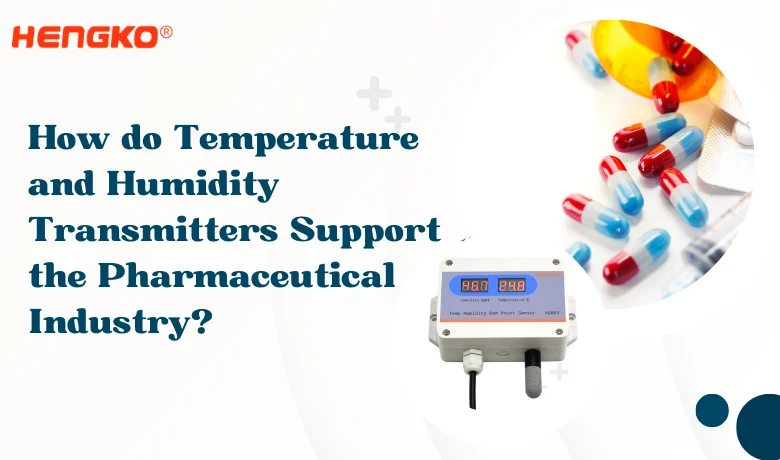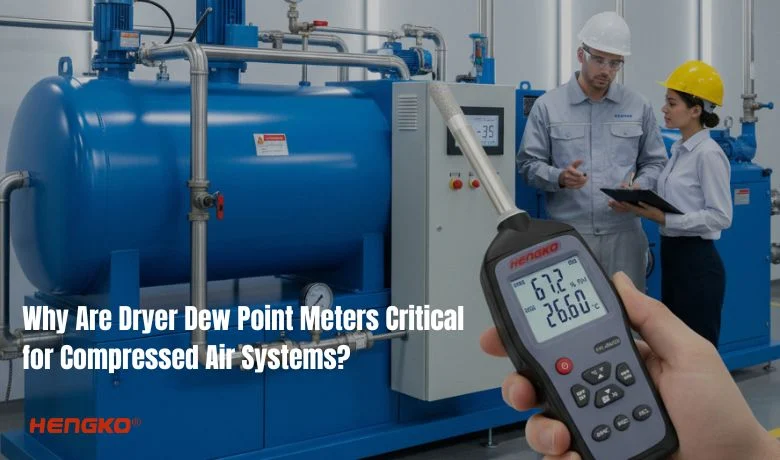Introduction
Have you ever considered how the pharmaceutical industry ensures that medicines remain safe and effective from the lab to the patient? It’s not just about the ingredients—it’s about maintaining the right environment at every stage. Temperature and humidity are two crucial factors that influence drug development, production, and storage.
In research and development, stable conditions are essential for accurate, reliable results. In production, how do companies maintain strict cleanroom standards? And when it comes to storage and transportation, what’s the secret to safeguarding sensitive products?
Temperature and humidity transmitters are the answer. These devices monitor and provide real-time data, ensuring that conditions are always optimal. Are you curious to know how they work in each phase? In this article, we’ll show you how they work in R&D, production, and storage, and why they’re essential for ensuring quality and compliance.
Temperature & Humidity: Keys to Pharmaceutical Compliance
The pharmaceutical industry enforces strict temperature and humidity controls to ensure drug safety, quality, and efficacy. Key regulations include:
Good Manufacturing Practice (GMP): Requires precise environmental control during production to prevent contamination and ensure quality.
Good Storage Practice (GSP): Mandates appropriate temperature and humidity for drug storage, with monitoring systems to detect deviations.
Good Distribution Practice (GDP): Focuses on maintaining environmental conditions during transportation to protect product integrity.
ICH Guidelines:Defines conditions for stability testing, such as 25°C/60% RH for long-term studies.
WHO and Regulatory Bodies: Emphasize cold chain management and validated monitoring systems to ensure compliance with FDA and EMA standards.
Advanced temperature and humidity monitoring systems help meet these regulations and maintain drug stability throughout the supply chain.

Critical Role of Temperature and Humidity Transmitters in the Pharmaceutical R&D, Production, and Storage
Temperature and humidity sensors are indispensable in the pharmaceutical industry. They providing accurate and reliable environmental monitoring across various processes and ensure optimal conditions in three critical areas: research and development, production, and storage.
Application in Research and Development
In the pharmaceutical research and development (R&D) phase, maintaining precise temperature and humidity control is crucial for ensuring accurate test results, drug stability, and regulatory compliance. Here’s how temperature and humidity transmitters are used:
● Monitoring Laboratory Environments: Temperature and humidity affect experimental outcomes, including chemical reactions and compound stability. Continuous monitoring ensures stable conditions, enhancing research reliability.
● Stability Testing: Stability testing assesses a drug’s performance under specific conditions. Temperature and humidity sensors ensure alignment with regulatory standards, such as ICH guidelines, for both long-term and accelerated testing.
● Simulating Environmental Conditions: Drugs are tested under varying conditions to assess stability. Monitoring systems replicate extreme temperature and humidity to evaluate how the drug reacts, providing insights into long-term behavior.
● Ensuring Regulatory Compliance: R&D must meet FDA, EMA, and ICH regulations. Temperature and humidity sensors document environmental conditions, supporting drug approvals and audit compliance
Application in Production
Temperature and humidity transmitters in production help ensure quality, prevent contamination, and meet regulatory requirements, all of which are critical for producing safe, effective pharmaceutical products.
● Maintaining Cleanroom Standards: Cleanrooms minimize contaminants in pharmaceutical production. Monitoring systems ensure conditions stay within required parameters, reducing microbial growth and ensuring sterile manufacturing.
● Ensuring Production Quality: Temperature and humidity affect processes like mixing, drying, and tableting. Accurate monitoring ensures these processes occur under ideal conditions, preventing issues like uneven mixing or product degradation.
● Supporting Sterilization Processes: Temperature and humidity are crucial for sterilization, such as autoclaving. Transmitters ensure correct conditions, eliminating pathogens and ensuring drug safety.
● Regulatory Compliance in Production: GMP compliance requires strict environmental control. Real-time monitoring and data logging from sensors ensure compliance and provide audit documentation.
Application in Storage
In the storage phase, temperature and humidity control are essential for preserving the integrity of pharmaceutical products, especially sensitive drugs and biologics. Proper environmental conditions help ensure that drugs maintain their potency, stability, and safety throughout their shelf life.
● Maintaining Optimal Storage Conditions: Temperature-sensitive drugs, like vaccines, require specific conditions for proper storage. Temperature and humidity sensors monitor storage areas (e.g., warehouses, refrigerators, freezers) to ensure these conditions are met, preventing product degradation.
● Cold Chain Management: Cold chain management is critical for transporting temperature-sensitive drugs. Transmitters monitor real-time conditions, ensuring products stay within the required temperature range (e.g., 2°C to 8°C), preserving the integrity of biologics and vaccines.
● Preventing Contamination and Degradation: Temperature and humidity fluctuations can cause contamination or degradation of drugs. Transmitters help maintain stable conditions, reducing microbial risks and ensuring drug potency.
● Regulatory Compliance for Storage: Regulatory bodies like the FDA, EMA, and WHO set strict storage guidelines that require continuous monitoring. Data logging from sensors provides the documentation needed for compliance with Good Distribution Practices (GDP) and other standards.
As these factors illustrate, effective monitoring and control of environmental conditions are essential to safeguarding the integrity of pharmaceutical products throughout their lifecycle.
Key Advantages of the HG808-C Series Temperature and Humidity Transmitter for the Pharmaceutical Industry
To meet the rigorous demands of the pharmaceutical industry, advanced temperature and humidity transmitters like the HENGKO’s HG808-C series offer significant benefits across various applications.
● Exceptional Accuracy for Stability:Features a high-precision humidity sensor with ±1.5% RH accuracy, meeting the stringent environmental monitoring requirements of pharmaceutical regulations such as GMP and GDP.
● Wide Temperature Range : Operates effectively in a broad range of -50°C to +150°C, making it suitable for diverse pharmaceutical environments, from cold storage to high-temperature sterilization areas.
● Durability in Harsh Environments: Engineered for long-term stability in high-pressure and challenging industrial conditions, ensuring reliable performance during critical pharmaceutical production processes.
● Optimized for Cleanroom Monitoring: Designed to meet the demands of dust-free and clean environments, making it ideal for pharmaceutical cleanrooms, operating rooms, and research facilities where precision is critical.
● Versatility Across Pharmaceutical Operations: Suitable for applications in research and development (stability testing), production (cleanroom conditions), and storage (cold chain management), covering the entire process of pharmaceutical products.
Ready to enhance your pharmaceutical operations with precise temperature and humidity monitoring?
The HG808-C series temperature and humidity transmitter offers unmatched accuracy, durability, and compliance support for research, production, and storage environments. Ensure your cleanroom conditions meet industry standards and safeguard the quality of your pharmaceutical products.
Contactez nous at sales@hengkometer.com to learn more about how the HG808-C series can elevate your operations!






